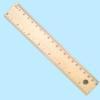Order, order!
Can you place these quantities in order from smallest to largest?
Problem
Have a look at the sets of four quantities below. Can you rank them in order from smallest to largest?
To help you decide, you may need to find extra information or carry out some experiments.
Can you convince us that your order is right?
Image

| Time
|
Image

| Distance
|
Image

| Mass
|
Getting Started
How could you estimate each of the quantities?
What extra information might you need to find out?
Student Solutions
Daisy from Ricards Lodge has given us lots of details to explain how she ordered the quantities. Are you convinced by what Daisy says?
Time: (shortest to longest)
Eat a biscuit - I think that to eat a normal sized circular biscuit takes roughly $30$ seconds to eat at a usual pace!
Taken to travel to school - The journey from my house to school takes $40$ minutes and this is quite a common length of time for the journey amongst my classmates.
Taken for mustard and cress to grow from seeds - in a suitable climate this process should take no longer than three days.
The period between your 6th and 7th birthday - this is $365$ days, (unless your birthday is on a leap year) a whole year, clearly the longest amount of time on this list.
Distance: (shortest to longest)
Length of a ladybird - they grow up to approximately $4$mm.
How high you can jump in the air - This really depends on your height but it is very likely to still be measured in cm; which is why I put it second on the list.
How far you can kick a football - Amateur footballers can kick a ball up to $50$m, definitely a longer distance than the last measurement.
How far can you run in $30$ seconds - In my age group, it is possible to run $200$m in under half a minute, considerably longer than the length you can kick a ball.
Mass: (lightest to heaviest)
A balloon - I estimate that the mass of a balloon is about a gram as it is practically all gas which has a very minimal mass.
Bar of chocolate - A usual bar of chocolate (measuring roughly $20$cm) weighs between $50$g and $60$g.
Loaf of bread - A loaf of shop-bought pre-sliced bread weighs $800$g.
Teacher - The average weight of a woman in the UK is $65$kg and for men, $72$kg. This makes it the heaviest measurement in the list.
Let us know if you have any comments about Daisy's estimations.
Teachers' Resources
Why do this problem?
Possible approach
Key questions
Possible extension
Some children might like to have a go at a similar problem In Order, which demands more clarity about the assumptions they are making.
Possible support
Reassure learners that there are often no exact values (so no "wrong" answers), and their task is simply to find some evidence to convince others of the order. Encourage them to experiment, and offer some guidance on how to search for suitable data.
